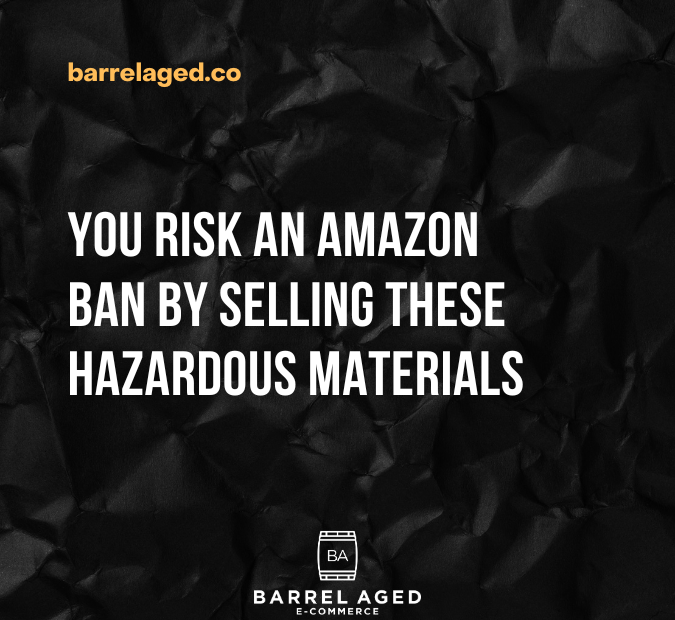Selling dangerous goods on Amazon can be very risky as it comes with significant responsibilities. Mismanagement of these items can lead to severe consequences. To prevent customers or Amazon workers from coming in contact with harmful products, Amazon created the FBA Dangerous Goods Hazmat Program.
What Qualifies as Dangerous Goods?
Dangerous goods include items like lithium batteries, aerosols, flammable liquids, and chemicals. These products can pose risks if not handled and shipped correctly. The primary risks associated with these hazmat products include leakages, fire hazards, health hazards, and the potential for explosions.
To help determine if your product falls under the classification of a dangerous or hazmat good, check the Product’s Material Safety Data Sheet (MSDS). The MSDS (or SDS) provides detailed information about the properties of a chemical product, including its hazards and safety precautions. Look for sections on hazard identification and regulatory information to see if your product is listed as a hazardous material.
You can apply for the Amazon FBA Dangerous Goods Hazmat Program if your product falls under the category of dangerous goods. Understand that there are extra fees associated with this. These products may not be ideal to sell as customers may feel uncomfortable buying products labeled as dangerous.
The Risks of Non-Compliance
To even be able to sell these products, Amazon has to approve merchants. Failure to comply with regulations can result in fines, account suspensions, account ban, and even legal action. Additionally, improper handling can endanger customers and damage your reputation. This will RUIN your sales!
How to Stay Compliant
- Understand the Guidelines: Amazon and local authorities have strict guidelines for dangerous goods. Ensure you understand these thoroughly.
- Proper Documentation: Keep detailed records of your dangerous goods, including safety data sheets and proper labeling.
- Use Approved Packaging: Make sure your packaging meets Amazon’s standards for dangerous goods. This includes using the right materials and labels.
- Regular Training: Continuously train yourself and your team on the latest safety and compliance practices.
Take Immediate Action, Now!
Review your product listings and inventory now. Identify any dangerous goods and ensure you meet all regulatory requirements. Acting swiftly can prevent costly mistakes and protect your business. It’s best to stay away from these products, but if you are brave enough, go for it! Just be sure to not break any of Amazon’s rules and regulations.
Questions? Reach Out!
If you have any questions, please feel free to contact us.
